1. Introduction
What is the most suitable time for providing users with interactive multimedia information about an exhibition? When are they most likely to spend some (scarce) time actually going through this information? Possible answers are:
- Before they go to the exhibition (assuming actual attendance)
- While visiting the exhibition (through panels, interactive kiosks, mobile devices,…)
- After visiting the exhibition (at the exhibition’s premises, on the way back, at home, ...)
- At any time, independently from a visit to the exhibition
- Any combination of the above.
Along with the timing, other issues can be raised:
- Which objective(s) does it make sense to pursue, for the different timings?
- Which content is more appropriate, again for the different timings?
- Can the impact (on users) of multimedia information be evaluated, and, if so, how?
It is not our aim to provide final answers to the above questions, but rather to start a critical discussion. Our observations are based on data collected during three user studies (the third one still going on at the time of writing) carried on in cooperation between the Museo Cantonale d’Arte in Lugano and TEC-LAB at the University of Italian Switzerland, from the year 2008.
Deferring the examination of the findings from these user studies to the next section, let us make some preliminary remarks about objectives and content, in relation to timing:
Before the visit
- Possible objectives: promoting the exhibition (i.e. encouraging the user to visit it), stimulating cultural interest, preparing the user for the visit
- Possible content: quick overview of the exhibition, practical information (how to get there, schedule, ticketing …), a few strong cultural “messages”, a detailed description of the exhibition and its rationale, detailed descriptions of the works on display (catalogue)
- Remarks: preparing the user for a possible visit seems to be a wide-spread desire. Almost all the communication tools that currently circulate (e.g. brochures, Web sites, catalogues…) apparently assume that (a) the readers have not seen the exhibition yet and (b) they are interested into visiting it. The question is: do would-be visitors actually go through all this information, beyond synthetic promotional material and practical info?
While visiting the exhibition
- Possible objectives: stimulating cultural interest, conveying the exhibition messages and rationale, allowing the visitors (not just ‘users’) to enjoy a longer and more rewarding visit
- Possible content: quick overview of the exhibition, overview of the main sections/themes of the exhibition, detailed descriptions of the works on display (catalogue), a guide (i.e. a synthetic description of a selected set of objects).
- Remarks: there is a large consensus about the need to support visitors during their visits. There are, however, different opinions about which tools to use (e.g. traditional vs. technology-based). There are concerns about competition for time and attention: should visitors take time away from actually looking at the exhibits? Should multimedia information compete for visual attention, with respect to the exhibits? In addition, some detractors argue that interactive devices (whatever the technology supporting them) create a barrier against socialization among the members of a visiting group (e.g. families, friends, couples…).
After the visit
- Possible objectives: allowing visitors (not just ‘users’) to reenact the emotions of the visit, supporting a better understanding of the exhibition’s meaning and rationale, providing in-depth information (about the artists, the exhibits, related issues …)
- Possible content/services: overview of the main themes of the exhibition, detailed descriptions of the works on display (catalogue), issues and information related to the exhibition, ‘social spaces’ for discussion
- Remarks: this is probably the least considered of the various scenarios, in spite of the fact that the catalogue as well as any other material related to the exhibition is usually read (although by a few people) after the visit. What is the right time to provide content? Right after the visit (e.g. at the cafeteria or on the way back)? A few days after the visit? A long period of time after the visit?
At any time, independently of any visit
- Possible objectives: allowing users to understand what the exhibition is about and its rationale; allowing users to ‘virtually browse’ the exhibition, offering what may be defined as a ‘virtual visit’
- Possible content: an overview of the main themes of the exhibition, a ‘virtual guide’; i.e. a guide for users who will not actually visit the exhibition, introducing some of the exhibits.
- Remarks: does anyone actually want to understand an exhibition that they will never visit? This may be true for special categories of users (e.g. students, researchers, professionals of the field, …) but could also work for normal users as a way to get exposed to something interesting.
Any combination of the above
- Objectives and possible content are, clearly, a combination of the above.
This preliminary discussion highlights a few important points: first of all, objectives can be quite different, in relation to the timing. Persuading users to become visitors is quite different from helping them to better understand an exhibition that they have already seen, or that they will never see. Secondly, the corresponding content can be quite different: explaining an exhibition to a visitor who is visiting it (or who has just visited it) is quite different from describing it to someone who has not seen it yet, nor will ever see it.
This paper does not mean to take an exhibitor’s point of view (what is more convenient?) but rather the users/visitors’ point of view. What would they like? In the next sections we examine these issues in the light of data collected during three different user studies (with the third study still ongoing).
2. User Studies at Museo Cantonale d’Arte and Museo d’Arte Moderna
The first two user studies were carried on to correspond with the exhibition Enigma Helvetia (spring-summer 2008; www.enigmahelvetia.usi.ch). The third user study (still going on at the time of writing) is about the exhibition Look at me (winter 2009-2010; www.guardami.usi.ch).
For both exhibitions a ‘multimedia narrative’ was developed and made available via Web and for podcast. By narrative (Di Blas, 2008; Di Blas, 2009) we mean an image+audio interactive application, introducing the main themes of the exhibition, and using the exhibits to exemplify them. A narrative is more elaborated and intriguing than traditional promotional material while at the same time not as detailed and systematic as a catalogue. The narrative can be used on the Web or downloaded (for iPod or smart phone). The user can be very interactive (selecting specific pieces), or take a ‘couch potato’ attitude and let the narrative go. Two coexisting versions of each narrative exist: the short one lasts 5-7 minutes approximately; the long one takes about 25-30 minutes.
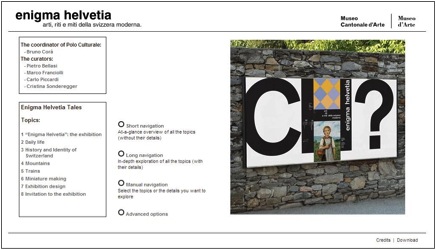
Fig 1: The home page of the Enigma Helvetia narrative.
For the purpose of this paper we do not want to discuss how well the multimedia narrative was received by the users (and it was received quite well, anyway). We rather want to investigate if, in the pattern of usage of the narrative and in its appreciation, there are some detectable differences due to the different timing: users who went through the narrative before visiting the exhibition (would-be visitors), vs. users who did the opposite (visitors), vs. users who knew that they would not visit the exhibition (non-visitors).
For the exhibition Enigma Helvetia, an on-line questionnaire (in Italian and English) was used in order to discover the users’ reactions. For Look at me, the on-line questionnaire has been accompanied by a number of interviews taken at the museum’s premises (to visitors just coming out of the exhibition). The data collection is still going on at the time of writing this paper).
Of the two user studies for Enigma Helvetia, the first was focused on the relationship between the actual visit to the exhibition and the ‘consumption’ of the multimedia narrative. Three combinations of user segments were considered:
- Users accessing the narrative before going to visit the exhibition
- Users accessing the narrative after visiting the exhibition
- Users consulting the narrative independently from a visit to the exhibition.
Altogether, 201 questionnaires were collected: 119 on line, and 82 at the museum’s premises.
Ages: 10% of the users who filled out the questionnaires were between 18 and 25, 24% between 25 and 35, 39% between 35-50, and 27% were over 50. The distribution roughly corresponds to the typical audience of the Museo Cantonale d’Arte.
Concerning the ‘expertise’ of users, we roughly measured it in relation to the number of exhibitions they had visited during the previous 12 months: 54% of them had visited more than 6 exhibitions (and were thus labeled as ‘experts’ by us), 37% between 3 and 6 exhibitions, and 10% less than 3. Again, this roughly corresponds to the typical spectrum of visitors for Museo Cantonale d’Arte.
Let us now examine the relationship between visiting the exhibition and consulting the narrative. Figure 2 shows the data: 20% of the respondents had already visited the exhibition, 48% were not planning to visit it or they did not know (which is probably a polite way to say “NO, we do not mean to visit the exhibition”). Only 32% had used the multimedia narrative as a way to know something about the exhibition before paying an actual visit.

Fig 2: Users of multimedia narrative as potential or actual visitors of the exhibition
In a word, the majority of respondents consulted the narrative independently from an actual visit. The number of users interested in understanding the exhibition before an actual visit was not much higher than the number of users who used the narrative after a visit (32% against 20%).
The time spent for consulting the narrative was surprisingly high, as shown in Figure 3: 84% of users spent more than 5 minutes with it, and 26% of them more than 20 minutes, a remarkable time.

Fig 3: Time spent exploring the multimedia narrative “Enigma Helvetia tales”
Even more surprising is the fact, illustrated in Figure 4, that there is no remarkable difference (as far as consultation time goes) between those who had already visited the exhibition and those who had not. Apparently, even users who had been at the exhibition were willing to spend a sizable amount time with a multimedia narrative about it.
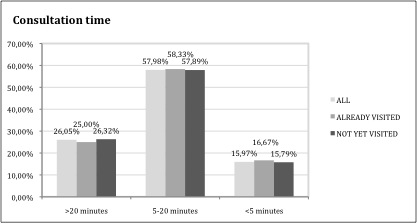
Fig 4: Consultation time of users who had already visited the exhibition compared to those who had not
Next questions are about impact. Do users react differently to the narrative in relationship to a visit to the exhibition?
Figure 5 is about how well the users felt the multimedia narrative represented and conveyed the major themes of the exhibition. The question, of course, can take different flavors: for users who had not visited the exhibition yet, the meaning was whether the narrative seemed to be an adequate and comprehensive introduction to the exhibition; for those users who had already visited the exhibition, the question meant whether they found an adequate match between the exhibition’s themes (as conveyed by the ‘real thing’) and the narrative as an introduction to them. Almost all of the “not-yet-visitors” found the narrative adequate (with more than 80% rating it very adequate). Of those who had already visited the exhibition, 77% found it adequate and 64% very adequate. Data collected from other answers in the survey (see below) show that this difference very likely depends on some sort of discrepancy between the real experience and what the narrative said, rather than on a lack of quality on the narrative side.
Although ‘promotion’ is not the issue of this paper, we notice that the narrative worked well also as a tool to encourage visits: more than 89% of the non visitors declared an increased interest for visiting the exhibition, and more than 70% a high interest (score 4 or 5).
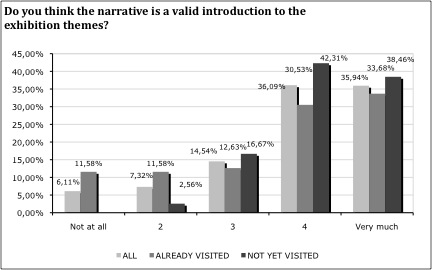
Fig 5: Does the multimedia narrative convey the ‘themes’ of the exhibition?
For the subject of this paper, two additional topics are crucial: the interest aroused by the multimedia narrative and the overall evaluation of it.
As far as ‘interest’ is concerned (see Figure 6), visitors and non-visitors have a similar positive pattern, but in terms of ‘high interest’ (score 4 or 5), users who had already visited the exhibition slightly outperform those who had not (71% vs. 64%).

Fig 6: Interest levels for the multimedia narrative about Enigma Helvetia
As far as overall evaluation is concerned, a similar pattern applies: there is an overall positive evaluation, but visitors outperform non-visitors (74% vs. 66%) in terms of high appreciation.

Fig 7: Overall appreciation for the multimedia narrative about “Enigma Helvetia”
These data suggested to us that maybe focusing mainly on would-be visitors could be a mistake, and that an important segment of audience for multimedia communication could be represented by those users who want to know more about an exhibition either after the visit, or independently from a visit.
In order to understand the issue better, we launched a second user study, roughly one month after the exhibition Enigma Helvetia was over. Via e-mail, we asked people on the museum’s mailing list to access the narrative and to fill out a slightly modified version of the on-line survey.
Response: 41 questionnaires were filled out: 33% of the users had already used the narrative before, so they knew what it was about; 20% had not visited the narrative yet, but had visited the real exhibition. The most surprising data were that 47% of the users had not visited the exhibition nor the narrative, yet they were still willing to go through it for a sizeable time.
Consultation time, in fact (see figure 8), was still quite high overall. It is worth noticing that despite the fact that the exhibition was over, 77% of the users consulted the narrative for more than 5 minutes, and 24% of them for more than 20 minutes. This is again a suggestion that interest for getting some in-depth information about an exhibition is not necessarily related to a possible future visit.
In terms of overall appreciation, as shown in Figure 9, users who explored the narrative for the first time showed an overall appreciation of it. Users who had not visited the exhibition showed a higher appreciation (no negative score, and 71% high appreciation). But also those who had actually visited the exhibition showed a good opinion: only 22% of the scores were negative, while 78% were positive, with 33% highly positive.
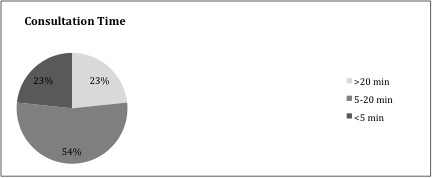
Fig 8: Time spent consulting the multimedia narrative when the exhibition was over
We also asked users who had visited the exhibition to tell us what they remembered most vividly. In most cases, users remembered exhibits and ‘themes’ that were among those highlighted by the narrative.
Although we can’t draw a firm conclusion, the above may suggest that multimedia communication helps visitors to make memories from a visit stronger and long lasting.
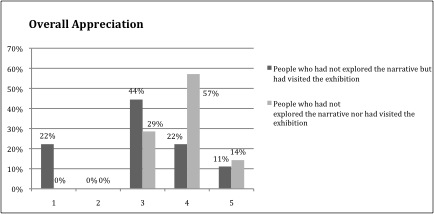
Fig 9: Overall appreciation of the multimedia narrative when the exhibition was over
In order to better understand the issues of this paper, we launched in December 2009 a third user study, in correspondence to the exhibition Look at me (again at the Museo Cantonale d’Arte). For this study (still ongoing at the time of writing), we added to the multimedia narrative a channel on YouTube, a channel on Flickr, and a Blog.
In addition, through interviews, we are trying to better understand ‘timing’ and ‘content’ issues: we inquire of visitors what type of content they would like to get and when. At the time of writing this paper we have only some anecdotic evidence, but it provides some interesting hints. All visitors seem to agree that promotional and practical info are useful before the visit.
As far as ‘in-depth content’ is concerned, opinions about timing seem to be different. With different wording, users gave us statements like, “I do not want to be prepared before my visit” or “I want to be surprised by the exhibition”. Most of the visitors seem to appreciate the possibility of getting in-depth information (both about the artists and the exhibits). Most of them do not seem keen on getting this information during the visit, for fear of being too much distracted by it or, at the least, of wasting precious time they would rather dedicate to taking in the works of art.
Again, it is too early to draw a conclusion from an ongoing user study, but it is interesting to note that (at least some of) the visitors want to get first hand emotion from the visit, and explanations afterward.
3. Conclusions and Future Work
First of all, we would like to comment that the subjects of our investigation were ‘generic users and generic visitors’. For different categories of users, the situation could be different. In Filippini-Fantoni, 2007, for example, it is argued that teachers (with their pupils) are willing to spend time to prepare for the visit and understand what they are going to experience at the exhibition, as is typical in a didactic setting.
As far as ‘generic users’ are concerned, we can’t draw a firm conclusion: our user studies were limited both in size and in depth. We can derive, however, a few hints/hypothesis:
- In-depth, stimulating information seems to be interesting after the visit or independently from any visit - almost as much as before or during the visit.
Support for this comes from the data of the first user study (consultation time and appreciation of the narrative), the data of the second user study, and the interviews of the third user study.
- Even when an exhibition is over, past visitors can be interested in recalling what they have seen, and they may be induced to spend a sizable amount of time with it.
- Support for this comes from the data of the second user study.
- For ‘after the visit’ or ‘independently from any visit’ users, practical and promotional information are clearly irrelevant, while it is important before the visit.
Support for this comes from the interviews and the comments annexed to the questionnaires of the first and second user study, and from the interviews of the third user study.
A problem still far from being solved is assessment of the impact of multimedia communication. Consultation time and user satisfaction studies do not solve the problem in an adequate manner. We are still in the realm of the self-perception of the user (e.g. “yes, I understood the themes of the exhibition”), rather than real evaluation. Qualitative analysis of what the users remember can be one way to go, but this is at the same time biased and limited. More research is needed on this issue.
It is clear that more focused and larger (in terms of number of users involved) user studies are needed before we can come to a well-grounded scientific conclusion.
Our future work therefore takes two directions:
- Improving the quality and the reliability of the user studies. Probably more qualitative research (based on interviews and focus groups) is needed in order to provide more accurate and complete answers (about timing, content type and impact).
- Devising and delivering different interactive multimedia applications, taking more into consideration ‘past visitors’ and ‘non-visitors’, both targets largely neglected so far. It may be worth providing them with especially tailored information packages, different from the ones made available so far (typically conceived and designed for the ‘would-be/future visitors’).
References
Bolchini, D., N. Di Blas, F. Garzotto, P. Paolini & A. Torrebruno (2007). “Simple, Fast, Cheap: Success Factors for Interactive Multimedia Tools”. PsychNology Journal, Volume 5, Number 3, 253 – 269.
Caporusso, D., N. Di Blas & P. Franzosi (2007). “A Family of Solutions for a Small Museum: The Case of the Archaeological Museum in Milan”. In J. Trant and D. Bearman (eds.). Museums and the Web 2007: Proceedings, Toronto: Archives & Museum Informatics, published March 1, 2007 Consulted March 12, 2010. http://www.archimuse.com/mw2007/papers/caporusso/caporusso.html
Di Blas, N., D. Bolchini & P. Paolini (2007). “Instant Multimedia: A New Challenge for Cultural Heritage”. In J. Trant & D. Bearman (eds) Museums and the Web 2007: Proceedings, Toronto: Archives & Museum Informatics, published March 1, 2007 Consulted March 12, 2010. http://www.archimuse.com/mw2007/papers/diBlas/diBlas.html
Di Blas, N. and C. Poggi (2008). “The PoliCultura Competition: Introducing Media Literacy in Italian Schools”. In M. Leaning (Ed.) Issues in Information and Media Literacy. Informing Science Press, 93-121.
Di Blas, N., E. Rubegni & P. Paolini (2008). “ENIGMA HELVETIA: promoting an exhibition using multiple channels”. Proceedings of IACH. Workshop on information access to cultural Heritage at ECDL 2008, September 18, 2008, Aarhus, Denmark.
Di Blas, N., P. Paolini & E. Rubegni (2009). “ICT for Cultural Heritage Communication: Investigating the Impact”. Proceedings of ESA conference, RN07 Sociology of Culture, 4-9. September 2009, Lisbon, Portugal.
Filippini-Fantoni, S. and J. Bowen. “Bookmarking In Museums: Extending The Museum Experience Beyond the Visit?” In J. Trant and D. Bearman (eds). Museums and the Web 2007: Proceedings. Toronto: Archives & Museum Informatics, published March 1, 2007. Consulted July 13, 2009 http://www.archimuse.com/mw2007/papers/filippini-fantoni/filippini-fantoni.html
Rubegni, E., N. Di Blas, P. Paolini, & A. Sabiescu (2009). “A Format to design Narrative Multimedia Applications for Cultural Heritage Communication”. Proceedings of SAC’10, March 22-26, 2010, Sierre, Switzerland.
